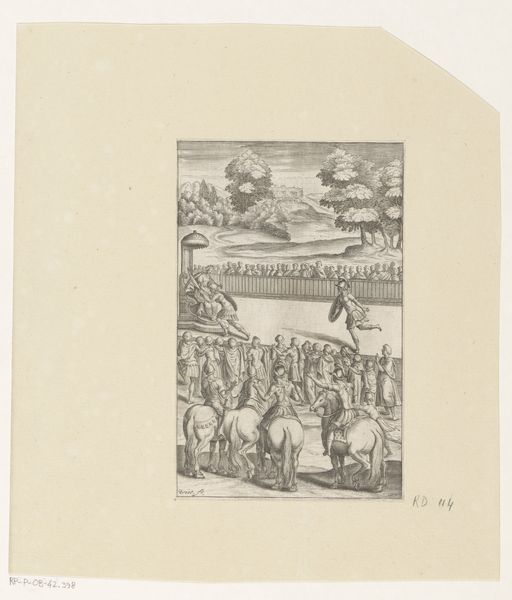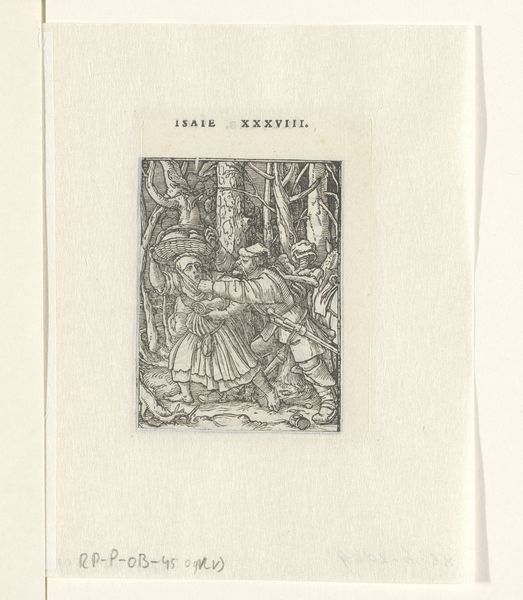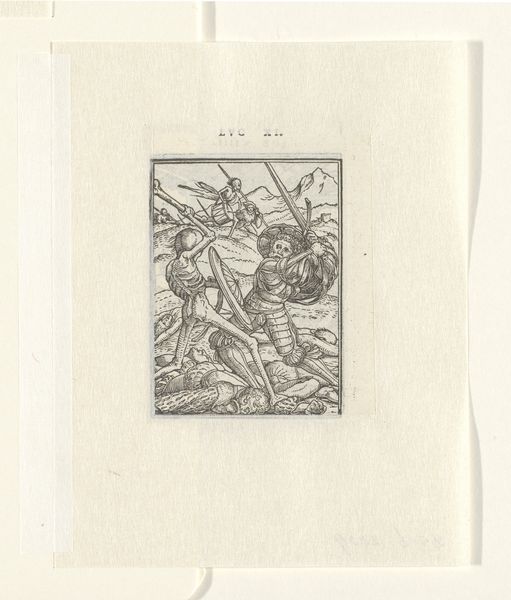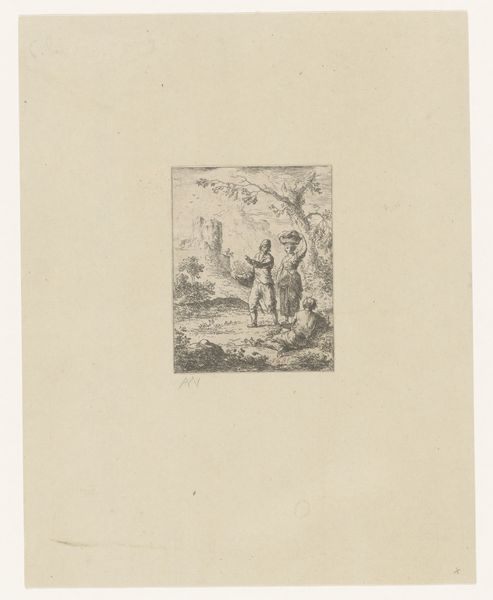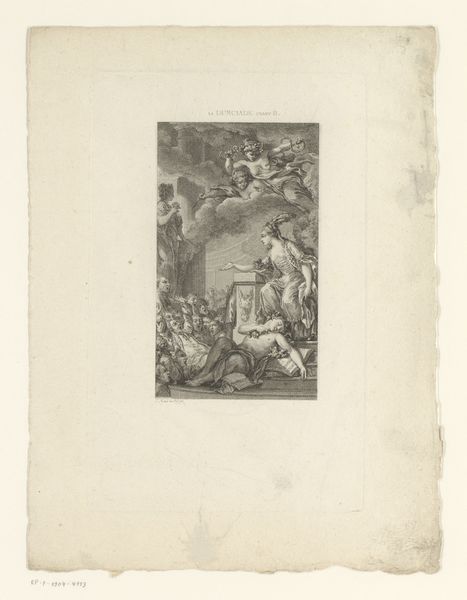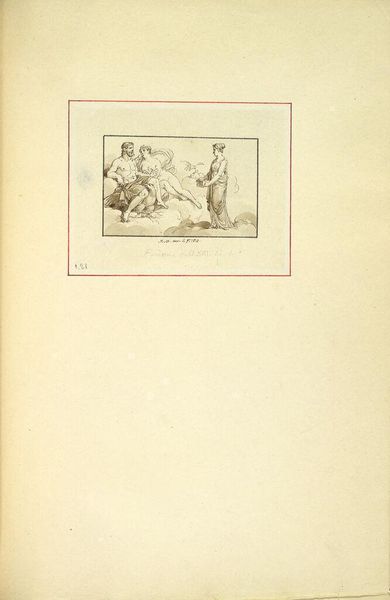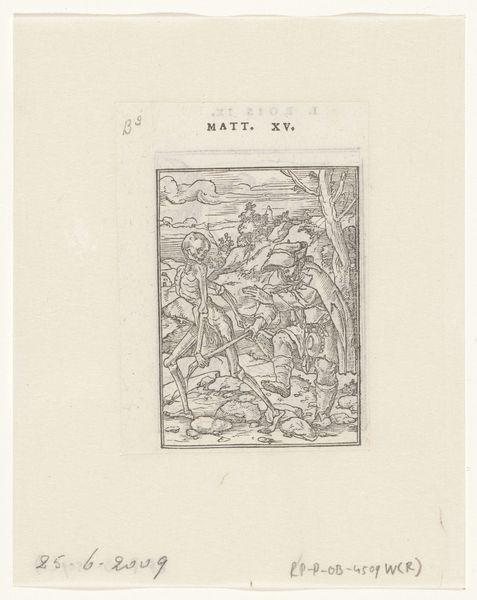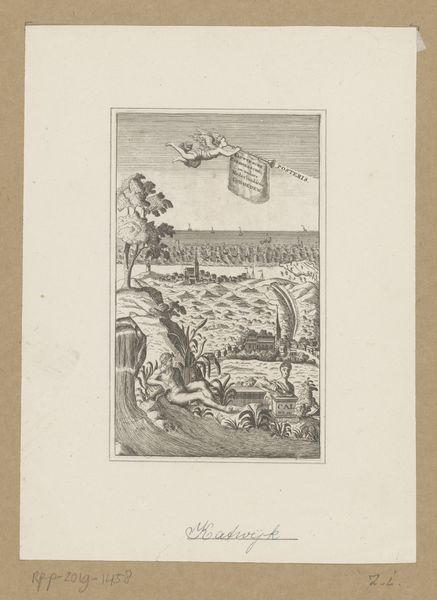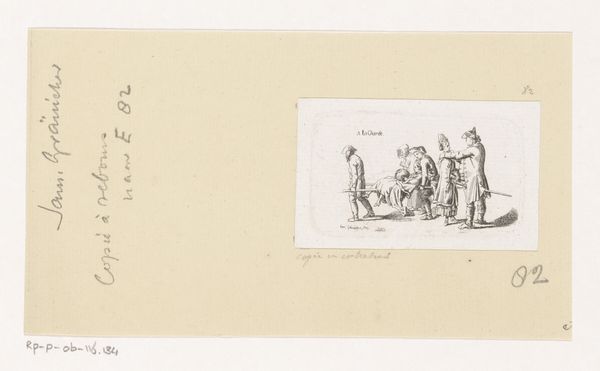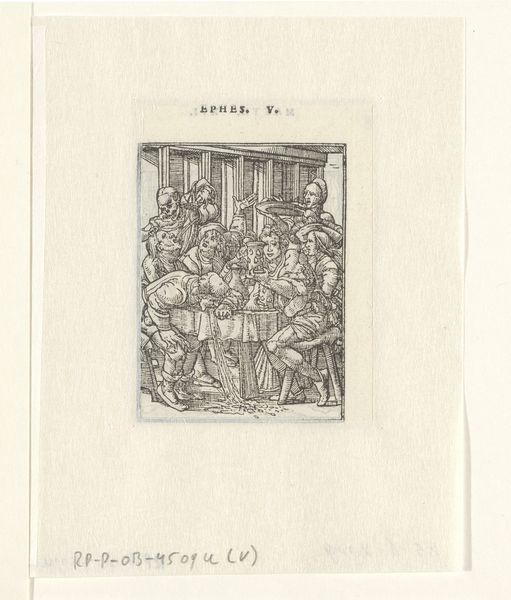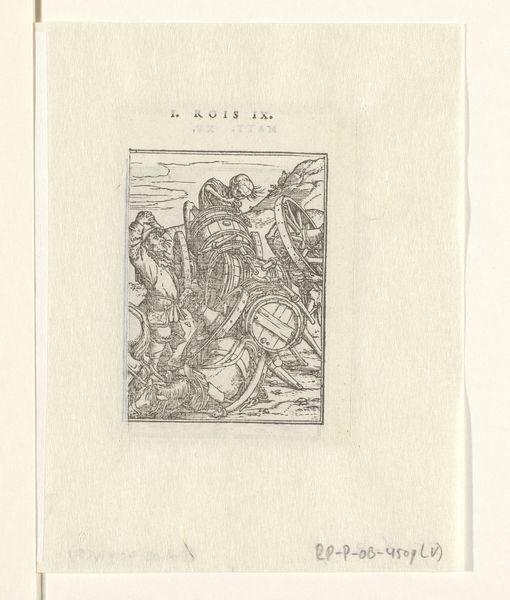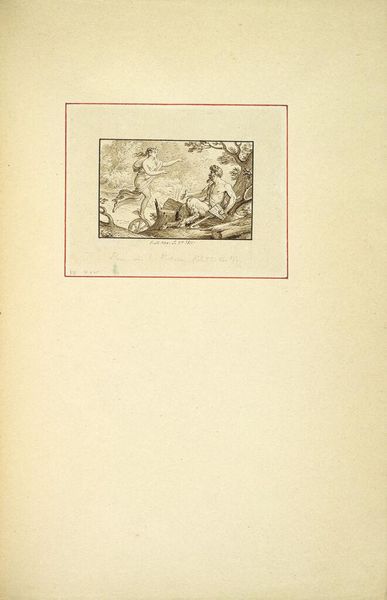
Drie kinderen dragen een kind en een ander kind draagt een stok met wijnranken 1547
0:00
0:00
print, engraving
# print
#
old engraving style
#
figuration
#
11_renaissance
#
personal sketchbook
#
child
#
pen work
#
northern-renaissance
#
engraving
Dimensions: height 65 mm, width 50 mm
Copyright: Rijks Museum: Open Domain
Editor: This engraving, “Drie kinderen dragen een kind en een ander kind draagt een stok met wijnranken,” or "Three children carry a child and another child carries a stick with vines," was created in 1547 by Hans Holbein the Younger. The level of detail achieved with just engraving is impressive! I’m curious, how do we understand an image like this within its historical context? Curator: Considering the cultural history, these children aren’t just cute figures. They echo classical imagery of putti, often associated with abundance and fertility, concepts embraced by the Renaissance elite. Holbein worked for powerful patrons; the imagery subtly reinforces ideals of wealth and family lineage. Does that reading shift how you see the piece? Editor: Definitely! Seeing them as symbols, not just figures, highlights how art reinforced social structures. Curator: Exactly. And think about how printmaking itself served a social function. Prints democratized images, circulating ideas more broadly than paintings ever could. This particular engraving would have been part of a series, disseminating moral or political messages to a wider audience. Editor: That's fascinating. So even something that appears purely decorative served a purpose beyond aesthetics? Curator: Absolutely. Every artistic choice, even in seemingly simple images, is informed by the socio-political context in which it was created and viewed. Now, consider where you'd expect to find this. Would it be hung on the wall of someone's house, or locked in a personal sketchbook? Editor: That makes me realize how much more there is to understand beyond just the image itself! It's like opening a window into the values and beliefs of the time. Curator: Precisely! It allows us to interpret visual art not just as artifacts but also as historical agents.
Comments
No comments
Be the first to comment and join the conversation on the ultimate creative platform.
